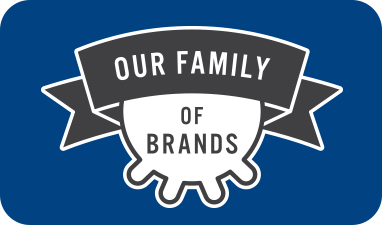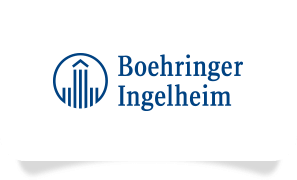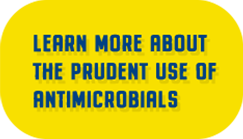TERMS OF USE
Please review and accept our Terms of Use, which outlines how we collect, use and disclose personal information.
This Terms of Use pertains to Boehringer Ingelheim Animal Health Canada Inc. (Also referred to as “we” or “our”). By using this website, you agree to these Terms of Use. If you do not agree, do not use this website.
This website is intended for Canadian residents only. The site provides selected information available about a range of disease topics. Please be aware that information relating to the approval status and labels of approved products may vary from country to country, and the content on this site reflects the terms of marketing authorization in Canada. This information is not intended to be a substitute for the advice of a veterinarian, or a recommendation for any particular treatment plan. It is important to rely on the advice of your veterinarian who can offer a veterinary diagnosis or veterinary treatment advice. Please consult with your veterinarian before using any products discussed within this website.
Summary of Our Collection, Use and Disclosure of your Personal Information
You are on a website that will collect, use or disclose personal information that you provide to us. An overview of how we collect, use and disclose your personal information is set out below. For additional details, please see our full Privacy Policy.
What Personal Information is Collected
Personal information means any information about an identifiable individual. The type of personal information that we collect from you include:
-
Your name
-
Your farm name
-
Your mailing address
-
Your email address
-
Your phone number
-
Name of veterinarian
-
Name of clinic
How is Your Personal Information Used
We will only collect, use, and disclose your personal information for specific purposes that are identified to you. We will not use your personal information for the purposes other than those identified and we will not keep your personal information for longer than is necessary to fulfill the purpose(s) of collection or as required by law. Personal information that is no longer required to fulfil an identified purpose will be erased, destroyed or made anonymous except as may be provided by law.
Below are the reasons we collect your personal information as it pertains to this particular terms of use:
-
Fulfillment of current promotion
-
Developing, marketing or improving our products and services
-
Notifying you of matters about which we are required by law to notify you (e.g. product recalls)
-
Internal and external quality assurance/audits
-
Complying with demands or requests made by regulators, governments, courts or law enforcement authorities
The following optional personal information and uses which are not a condition of service are collected:
-
Veterinarian name, Clinic name to keep our records up to date and to share with the Veterinary Clinic names of participating clients as a measure of success of the program in their respective region
-
Information on your Farm: Herd Size, Stall Type and Process for the purpose of demographics
-
Dairy Farmer/Vet/Other classification for demographics
Providing this information is optional, and you may opt-out by choosing not to divulge this information
Consent & How to Withdraw your Consent
Whenever you submit personal information to us, you consent to the collection, use and disclosure of that information in accordance with our Privacy Policy. If you do not agree to the collection, use or disclosure of your personal information, please do not submit your personal information.
In some cases, we may automatically collect your personal information when you use our website. For example, your IP address or cookies contain information that could make you identifiable. In such a case, your use of our website means that you have provided your implied consent to the collection of that personal information.
How is Your Personal Information Shared
The personal data and uses specified under sections “What Personal Information is Collected” and “How your Personal Information is Used” may be shared with the following third-parties: Boehringer Ingelheim Animal Health Canada Inc. related companies; your stated veterinary clinic.
All third parties inside or outside of Canada that we have engaged to provide us with services have appropriate safeguards in place to protect your personal information. Consult their websites for further information. Third parties may change over time and a current list of third party companies is available to you upon request by contacting AHLockoutteatsealant.BUR@boehringer-ingelheim.com
referencing these Terms of Use and detailing in what context your personal information was provided. It must be understood that we may not be able to provide certain services without the information collected.
For optional personal information and uses which are not a condition of service (outlined under Section “How is Your Personal Information is Used”), if you do not wish to have your personal information disclosed outside of Canada, please contact zrburchiefprivacyofficer@boehringer-ingelheim.com
, referencing these Terms of Use and detailing in what context your personal information was provided.
Risk of Harm and other consequences
Despite our mitigation efforts, the risk of harm and other consequences cannot be completely eliminated and could include damage to reputation or relationships, loss of employment, businesses or professional opportunities, identity theft, and damage to or loss of property.
Should there be a privacy breach relating to the personal information that you provided to us, we will make an assessment of whether this breach creates a real risk of significant harm to you. If so, we will notify you and suggest steps to take to reduce to the risk of harm, if possible.
How Do You Access and Update Your Personal Information
You can access, correct and delete your personal information by emailing us at zrburchiefprivacyofficer@boehringer-ingelheim.com
or by referring to the “Contact Us” section of our Privacy Policy. Please reference these Terms of Use and detail in what context your personal information was provided.
How is Your Personal Information Protected
Boehringer Ingelheim Animal Health Canada Inc. uses a variety of measures to protect the personal information it collects, including physical, organizational and technological measures. Any personal information will be treated by Boehringer Ingelheim Animal Health Canada Inc. in accordance with the Personal Information Protection and Electronic Documents Act (PIPEDA) and applicable privacy laws. No data transmission over the internet or data storage system can be guaranteed as 100% secure. Any transmission is at your own risk.
Cookies & Other Device Identifiers
This site uses cookies and other device identifiers such as web beacons or graphic tags to improve your browsing experience. By using this site without changing your browser settings, you agree to the use of cookies or other device identifiers. For more information on our use of cookies and other device identifiers and how to manage them, please see the “Managing Cookies” section in our Privacy Policy.
Changes to Our Privacy Policy
We reserve the right to change our Privacy Policy at any time. Please refer to the “Last Updated” legend of our Privacy Policy to see the latest changes.
Adverse Event Reporting
Please report any suspected adverse events associated with Boehringer Ingelheim Animal Health Canada Inc. veterinary products to:
-
Telephone Number: 1-877-565-5501
-
Telefax Number: 1-888-550-5395
-
Email Address: vetpv@boehringer-ingelheim.com
Legal Notices
By clicking ‘I accept’, I agree to the Terms of Use as described above and in our Privacy Policy including the use of Cookies. I also confirm that I am 13 years old or over.








